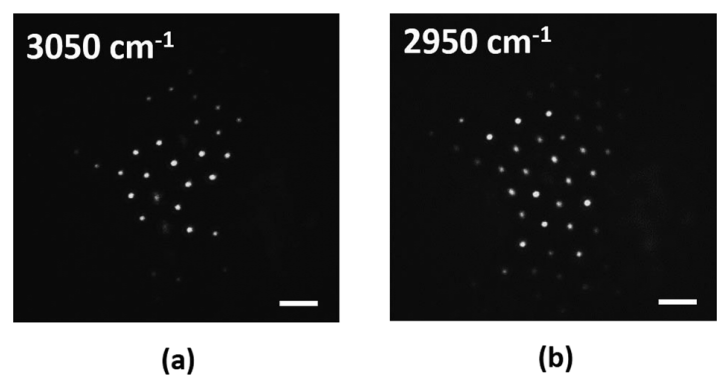Abstract
We propose a CARS microscope with a wide field of view based on the multi-channel coherent anti-Stokes Raman scattering (CARS) excitation scheme. By using a high-energy supercontinuum source generated by a large-mode area photonic crystal fiber (LMA PCF), a wide range of Raman scattering bands can be excited over a wide spatial region. The CARS imaging of specific Raman scattering vibration is realized by applying the corresponding bandpass filter. The experimental results show that fast CARS imaging can be performed on standard samples using high energy picosecond supercontinuum pulse excitation and corresponding filter to achieve different Raman scattering band imaging. This scheme can be applied to cell counting, gas sensing and other biomedical disciplines requiring high frame rate imaging, and it is also promising for high-speed hyperspectral imaging when combined with compressed sensing.

fig 1 (a) Schematic drawing of the wide-field coherent anti-Stokes Raman scattering (CARS) imaging.(Camera:DHYANA 95, Tucsen)

fig 2 Video-rate CARS imaging of the PS and PMMA bead mixture.
Analysis of imaging technology
As the Raman scattering signal is very weak, the Dhyana 95 camera used in this study adopts backlight sCMOS thin chip technology, which can avoid the interference of the light by wiring layer, improve the light area and improve the photoelectric conversion rate. The quantum efficiency is up to 95%, and the read noise is only 1.45 electrons (peak value). With a wide spectral response of 200-1100nm and a large pixel of 11μm, these characteristics are well suited for such applications. This scheme is also promising to be combined with compressed sensing to achieve high speed hyperspectral imaging in the future.
Reference source
1. Shen, Y.; Wang, J.; Wang, K.; Sokolov, A. V.; Scully, M. O. Wide-field coherent anti-stokes raman scattering microscopy based on picosecond supercontinuum source. APL Photonics 2018, 3, 116104, DOI: 10.1063/1.5045575

 22/03/04
22/03/04







